Draw a tree. A simple enough request I thought, then you sit down in front of one and really look at it. There’s a reason I haven’t really done much landscape drawing before, nature is complex, and it’s bloody complicated. This wasn’t going to be easy, trees are a collection of thousands of moving parts held together by a multifaceted structure that is mostly hidden, but always evident.
When it comes to drawing human anatomy I have a pretty good layman’s knowledge of the structures of the body. I’ve got one of my own, I’m quite attached to it, literally. But as I’m not a tree and until now never really closely examined one, I have no knowledge base to work from (unless you count falling out of them as a child). I needed to learn the rules, it was time to go to tree school.
Arboretum 101.
What constitutes a tree? Well in its simplest form it’s a plant, which conforms to the following rules. To be considered a tree, the plant must be at least 15 feet high when fully mature. Trees have one single woody stem that is the predominant support of the plant and is a minimum of 3 inches round at a height of 4.5 feet. The trunk then has a full crown of foliage at the top. There are two main types of tree, Evergreen and Deciduous. Evergreens keep their foliage all year round which is often needle like. Deciduous trees drop their broad leaf foliage in the winter in an attempt to conserve water and nutrients. Trees are made up of 4 parts, leaves, branches and stems, trunk, and roots.
Here’s a bonus fun fact that’ll never come up in a pub quiz. The average tree consists of only 5% leaves. Which seems crazy when you look at the things, they look more like 90% leaves to me.
Ok, schools over. Now we all know what a tree is, I can start thinking about how to draw one. Now there is no way on earth I’m going to be able to draw every leaf, branch, and stem. For one it would be laborious and time consuming, and most importantly completely unnecessary. All I need to do is describe the 4 constituent parts of a tree. If successful the viewers highly evolved monkey brain will do a lot of the heavy lifting for me. Hint at the presence of thousands of leaves and the viewer will fill in the blanks. Same goes for the texture of bark on the trunk and branches.
To confirm my thinking I’ve been looking at depictions of trees by other artists. Here are a few I’ve taken inspiration from.

Alberi – Piet Mondrian 1908
This is a great example of suggesting rather than showing. I particularly like the left hand side of the image where dark abstract mark making suggest a complicated form.

Cottage among trees – Rembrandt 1650
As someone who enjoys drawing in ink, I marvel at the draftsmanship in this sketch. With little attention paid to fine details this images tells you everything you need to know. You can feel the wind blowing from left to right, you can almost smell the ground under your feet.
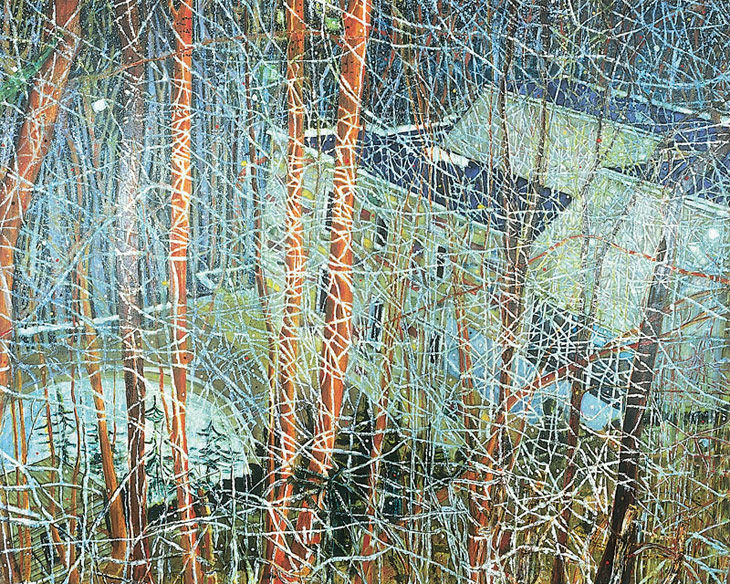
The Architect’s Home in the Ravine – Peter Doig 1991
I love this image. The way you experience the depth of the scene through layers and layer of vertical line. Only to have that structure obliterated by what feels like a random scribbled foreground.
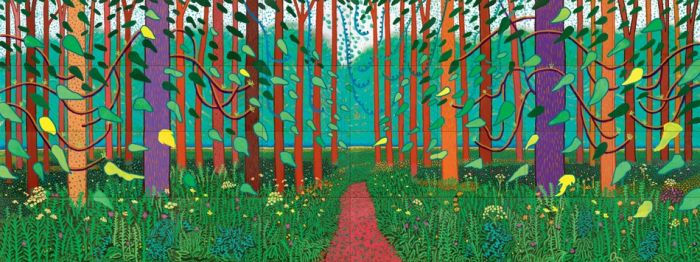
The Arrival of spring in Woldgate – David Hockney 2011
This is an image I know very well. I see it every single day, as a large print of it hangs in our living room. What excites me about it are the colour choices, how those choices emphasise and enhance the composition.
When I began this exercise it was spring and living in the North of England, that means only one thing: rain. This drawing was done from a photograph; even if I hadn’t produced it, I think I’d be able to tell.
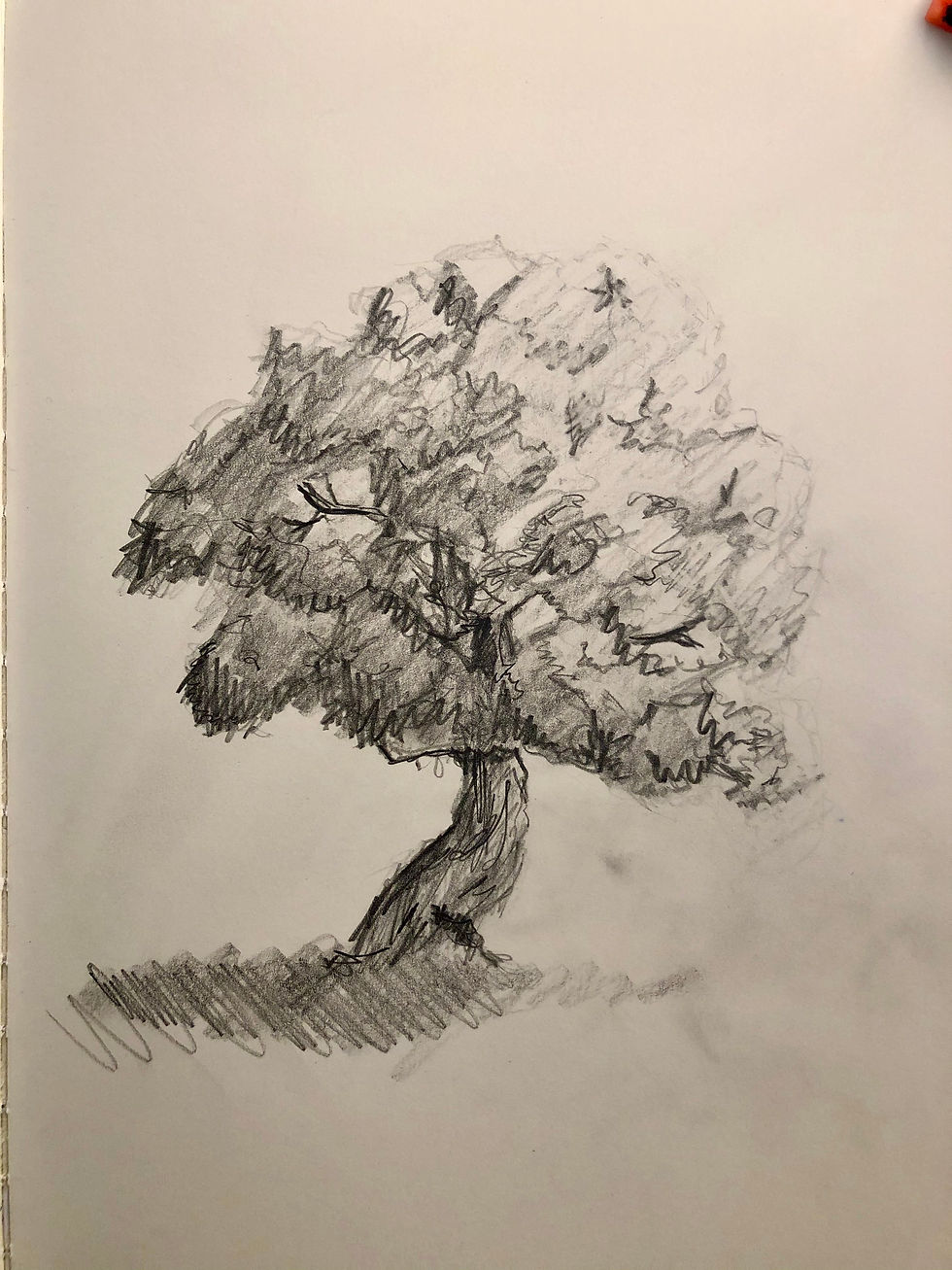
I felt unsatisfied drawing from photos, but it was still piddling down. What could I do to improve the situation? After a little out of the box thinking, I found a short video clip online. Using this as reference I got a little closer to being plein air.
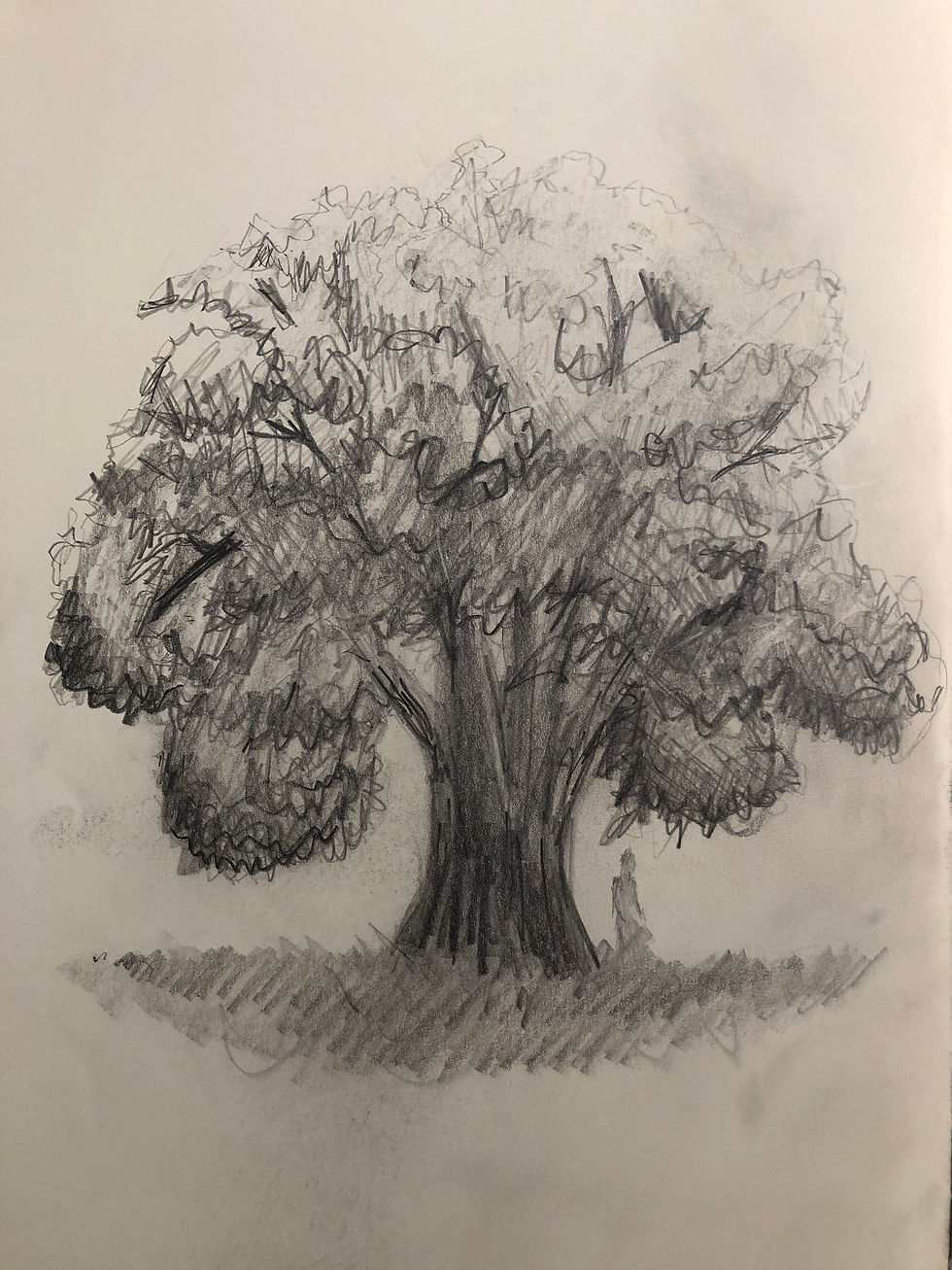
Finally a day without rain. I packed my bag and strapped on my folding stool; to the park I went. After a bit of a wandering around, I found my arboreal victim. I found this most satisfying after being stuck at my desk for the previous drawings. After finishing this drawing, I felt I was beginning to get somewhere. It's significantly easier to really observe a thing when it's right in front of you. It's all so much more real when it's real.

Wouldn’t you know it, it’s raining again. So rather than resort to screen based reference, I looked out the kitchen window. Although technically not a tree (see Arboretum 101 wasn't a waste of time), the ivy that covers our garden wall is as big as a tree and has interesting patterns with the foliage. I feel the random scribbling really comes across like leaves.
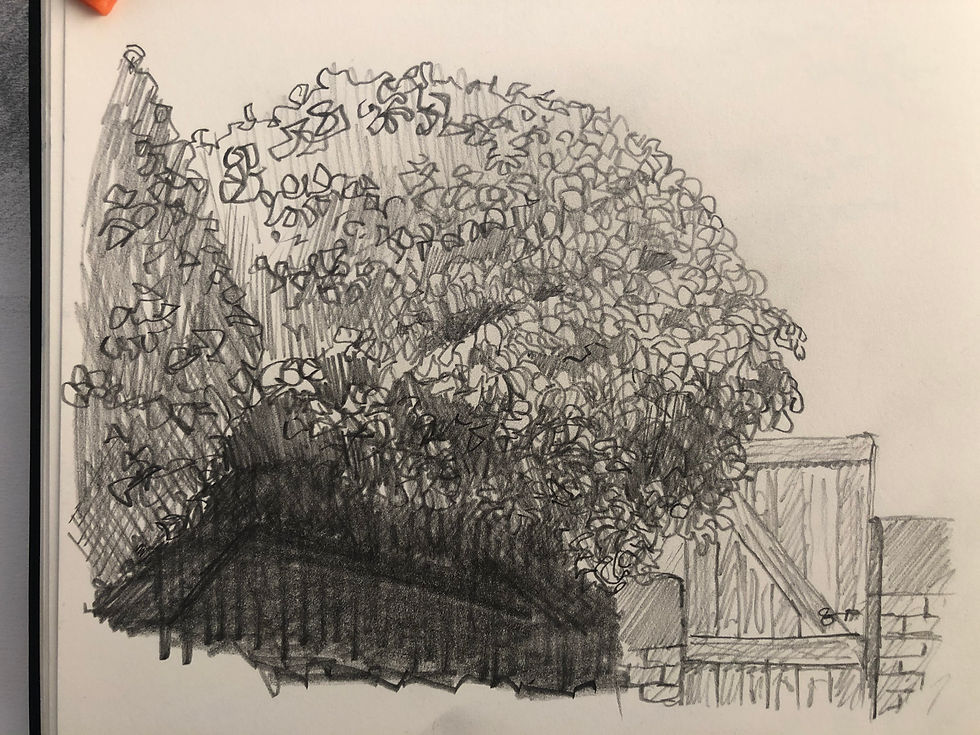
Through this exercise, I have spent most of my time concentrating on rendering the foliage. Next time out, I think I need to give the trunk and branches a bit of love. So many interesting patterns and textures to explore there too.
So, that’s another exercise done and now on to the next. Could it be more trees? Tune in next time for more exciting adventures in drawing. Will it stop raining? Doubtful. Will I manage to get through writing a post without crap jokes? Almost definitely not.
Happy Scribbling
Comments